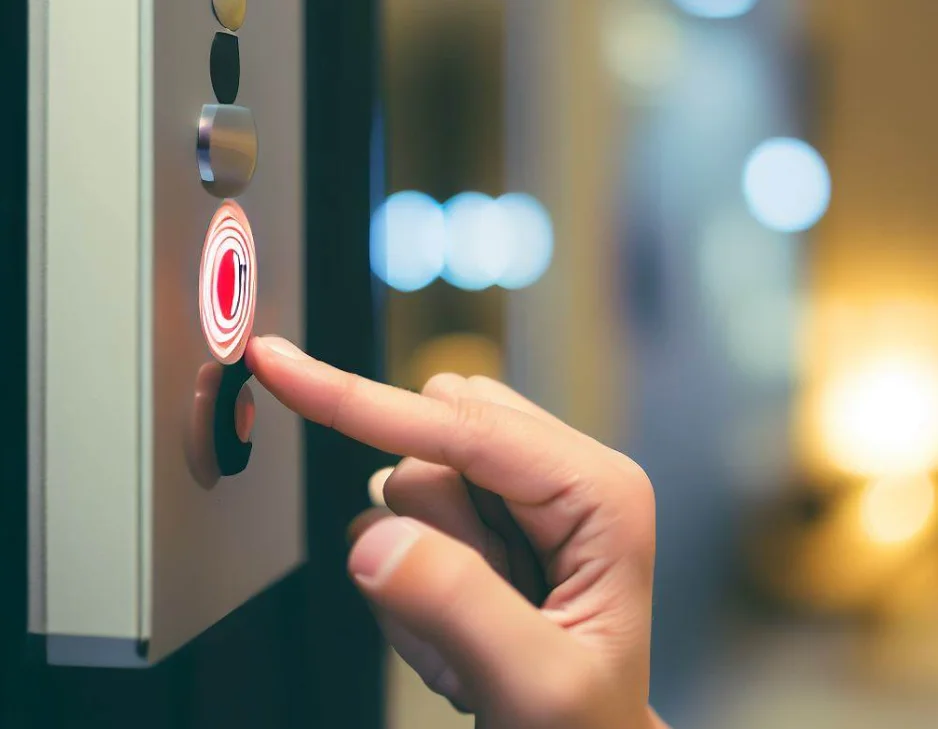Personal safety devices like panic buttons and panic alarms provide critical ways for individuals to quickly summon help in dangerous situations. Though often used interchangeably, panic buttons and panic alarms have some distinct differences in how they notify responders during emergencies.
Understanding the unique features and best uses of each can help maximize the effectiveness of emergency communication systems.
This comprehensive guide from JET Hotel Solutions (https://www.jethotelsolutions.com/) examines what exactly panic buttons and panic alarms are, how they work, their key differences, and optimal applications to enhance personal safety in a range of environments.
What is a Panic Button?
A panic button is a small wired or wireless device that allows individuals to manually activate a silent alarm to notify authorities or monitoring services of an emergency. Panic buttons are designed to be highly visible and within easy reach, but also discreet or concealed so they can be triggered without a perpetrator’s knowledge in tense situations.
Panic buttons are commonly installed under counters, on keyboards or keypads, worn on lanyards, or held in hand.
When manually activated, they send a silent signal to monitoring services or first responders, indicating the location and type of emergency so aid can be dispatched covertly. This avoids escalating confrontations by keeping the alarm activation discrete.
Panic buttons are often found in banks, stores, healthcare facilities, offices and other public-facing businesses where staff may encounter threatening situations with customers. They provide a way to surreptitiously call for backup when openly dialing 911 could further endanger staff.
What is a Panic Alarm?
A panic alarm refers to an emergency notification system that is activated by various types of devices to summon help, not just a manual panic button. For example, panic alarms may consist of wearable man down buttons that auto-activate if the user becomes incapacitated.
Panic alarms also commonly use wall-mounted buttons but feature loud, audible sirens and strobes that blare throughout a building when activated. This is designed to provide maximum occupant notification of imminent dangers like active shooters, fires or other threats. Audible panic alarms remove reliance on PA announcements and ensure all present are alerted.
Panic alarms with sirens are often found in crowded facilities like college campuses, stadiums, hospitals and anywhere containing a high density of people. Their goal is to alert masses of occupants to take appropriate protective actions based on emergency response training.
Key Differences Between Panic Buttons and Panic Alarms
While both provide ways to call for help, panic buttons and panic alarms have some important differences:
- Activation Method: Panic buttons require manual activation by an individual, while panic alarms may auto-activate via sensors on man down pendants.
- Notification Type: Panic buttons trigger silent, third-party monitored alarms to monitoring centers. Panic alarms sound extremely loud, localized sirens and strobes.
- Notification Recipient: Panic buttons notify remote monitoring services to dispatch discrete response. Panic alarms directly notify all occupants in the facility.
- Ideal Response: Panic buttons allow covert response by authorities to defuse threats. Panic alarms prompt occupants to self-evacuate or lockdown.
- Locations: Panic buttons are optimal for scattered public-facing businesses. Panic alarms suit crowded venues and campuses.
- Integration: Panic buttons can integrate with access control systems. Panic alarms are standalone audible alarm appliances.
In summary, panic buttons provide silent monitored alerts while panic alarms provide loud self-activated local notification. Each fills important roles based on the environment and emergency response needs.
Optimal Uses for Panic Buttons vs. Panic Alarms
Understanding the unique attributes of panic buttons versus panic alarms is key to selecting the right emergency communication device for specific facilities.
Applications Better Suited for Panic Buttons:
- Banks – Allow tellers to discretely signal distress with patrons discreetly.
- Convenience stores – Enable clerks to surreptitiously notify police of robberies.
- Healthcare settings – Let staff call for help with disruptive patients without escalating.
- Government offices – Allow employees to covertly alert guards of disturbances with clients.
- Offices – Enable discreet signaling of active shooter or volatile employee situations.
- Hotels – Provide staff ability to subtly notify management of guest harassment issues.
- Remote worker safety – Permit home healthcare aides or social workers to signal emergencies when offsite.
Applications Better Suited for Panic Alarms:
- School/college campuses – Widely alert students and faculty to active threats prompting lockdown.
- Hospital facilities – Notify all staff of emergencies like an active shooter incident requiring shelter in place.
- Government buildings/courthouses – Alert all occupants including public to immediate security threats.
- Manufacturing facilities – Notify workers of workplace violence incidents necessitating evacuation.
- Stadiums/music venues – Alert attendees and staff of immediate danger like terror threats or riots.
Proper Selection, Training and Use
When selecting either panic buttons or panic alarms for a property, JET Hotel Solutions recommends working closely with security professionals to conduct thorough threat assessments of your facility. This will help determine if silent panic buttons for discreet monitoring or audible panic alarms for occupant alerting are the right solution.
Proper installation of these devices is also critical, as poorly placed buttons or alarms diminishes their effectiveness in actual emergencies.
Our JET Hotel Solutions (https://www.jethotelsolutions.com/) advises that user training for staff is also paramount so individuals understand proper activation procedures and associated protocols.
Regular drills should also be conducted to keep personnel prepared if emergency response systems are ever required.
It’s also vital to emphasize that panic buttons and alarms should only be activated in true emergencies, as false activations can incur fines and penalties. When installed and utilized responsibly, panic buttons and panic alarms provide invaluable tools to quickly summon aid when lives may be at risk.
In today’s unstable climate, having reliable emergency communication capacities is more crucial than ever.
Panic Buttons and Alarms for Hotels
For hotels and resorts, panic buttons and alarms can be prudent additions to enhance staff safety and meet emerging security regulations. Wall-mounted panic buttons at front desk areas allow staff to subtly signal security for help with unruly guests. Meanwhile, audible panic alarms may be warranted in secluded areas like parking garages, allowing guests to notify others of immediate danger situations.
We recommend that properties conduct full assessments of vulnerabilities across guest and staff areas. This will determine optimal panic button or audible alarm placement to match emergency risks.
Our company can then help select and integrate suitable panic or duress devices with a hotel’s existing access control and response infrastructure for streamlined emergency activation and notification.



